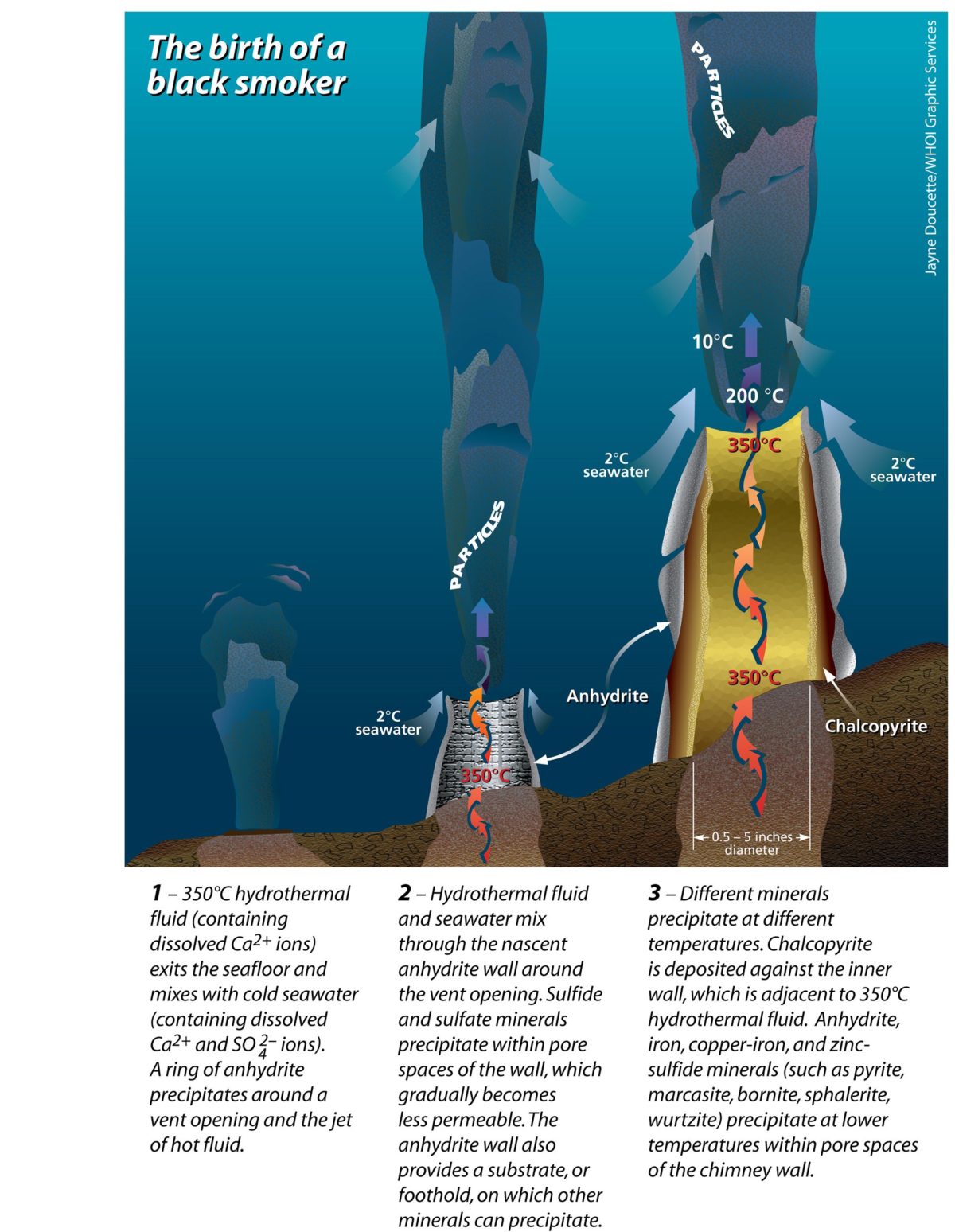The birth of a black smoker
During Stage 1 of black smoker chimney growth, hot, calcium-rich vent fluid mixes turbulently with cold, sulfate and calcium-rich seawater, resulting in precipitation of a ring of calcium sulfate (anhydrite) Metal sulfides and oxides carried in the hot fluid also precipitate rapidly during the mixing process, forming a plume of dark particles above the vent. During Stage 2 of chimney growth, the initial chimney wall of anhydrite forms a surface on which chalcopyrite (copper-iron sulfide) begins to precipitate and plate the inner chimney wall. Mixing of seawater and hydrothermal fluid components across the porous wall by advection and diffusion results in the deposition of zinc, copper-iron, and iron sulfides in the interstices of the wall, which gradually makes the chimney less porous and more metal-rich. (Illustration by Jayne Doucette, © Woods Hole Oceanographic Institution)
Image and Visual Licensing
WHOI copyright digital assets (stills and video) contained on this website can be licensed for non-commercial use upon request and approval. Please contact WHOI Digital Assets at images@whoi.edu or (508) 289-2647.

